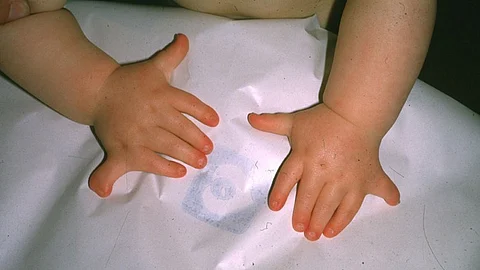

A baby boy in Bagalkot, Karnataka has captured the nation's attention with his extraordinary condition. Born with 12 toes and 13 fingers, the newborn has polydactyly, a rare condition where extra fingers or toes develop. While doctors attribute this to a chromosomal imbalance, the baby's parents believe it's a divine blessing. Despite the unusual circumstances, both the baby and mother are healthy. This unique case has sparked curiosity and wonder across the country.
What is Polydactyly?
Polydactyly is a birth defect where a baby is born with extra fingers or toes. It's a relatively common condition, affecting about 1 in every 1,000 births. The extra digits can vary in size and shape, from small skin tags to fully formed fingers or toes. This condition occurs mainly due to two primary factors:
Genetic Factors: In many cases, polydactyly is inherited. It's caused by a genetic mutation that affects the development of the hands and feet during pregnancy.
Non-genetic Factors: Sometimes, polydactyly occurs spontaneously without a clear genetic cause. Environmental factors or random errors in the development process might be responsible.
Treatment for Polydactyly
Treatment for polydactyly usually involves surgery to remove the extra digits. The timing of the surgery depends on factors such as the number and size of the extra digits, and any associated complications. In some cases, surgery may be delayed until the child is older. It’s crucial to consult with a pediatric hand surgeon or orthopedic surgeon to discuss the best treatment options for your child.
This content is purely informational and isn’t medical guidance. It shouldn’t replace professional medical counsel. Always consult your physician regarding treatment risks and benefits.
References:
“Polydactyly | Boston Children’s Hospital.” n.d. https://www.childrenshospital.org/conditions/polydactyly. (Cited on: 24/07/24)
“Polydactyly: MedlinePlus Medical Encyclopedia.” n.d. https://medlineplus.gov/ency/article/003176.htm. (Cited on: 24/07/24)
(Input from various sources)
(Rehash/Gayatri Prakasan/MSM)
